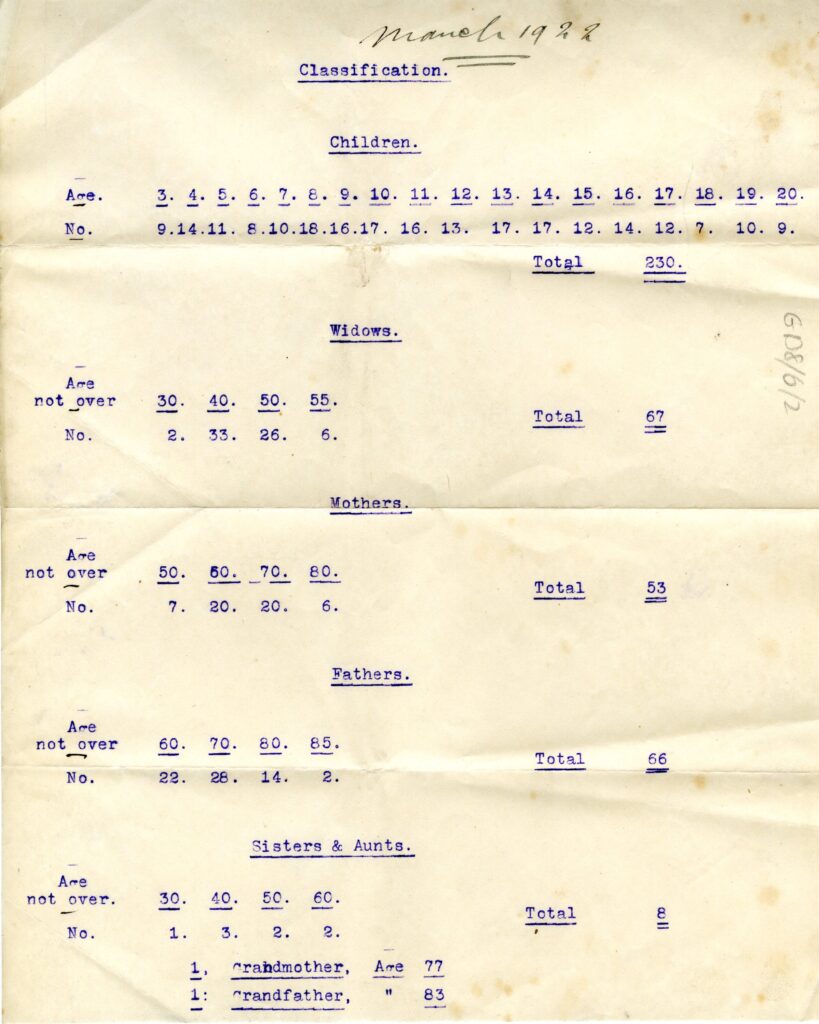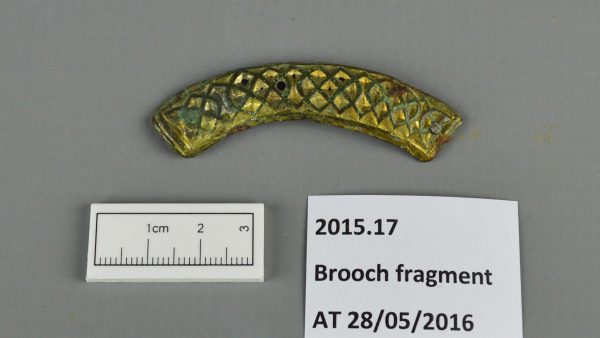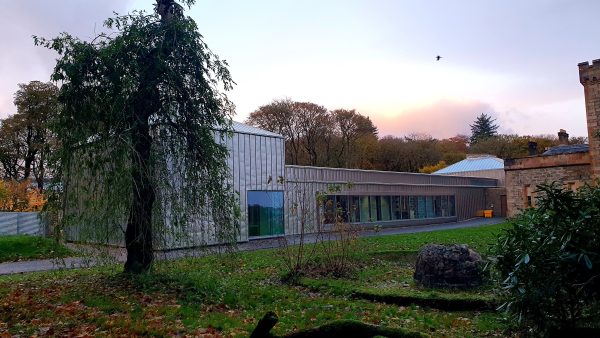
Archives of the Iolaire Disaster
‘he was my Son…’
In the early hours of 1st January 1919 His Majesty’s Yacht ‘Iolaire’ foundered on rocks, known as ‘the Beasts of Holm (Biastan Huilm)’ a short distance from the entrance to Stornoway Harbour. The vessel was carrying hundreds of Royal Naval Reserve men who had been granted leave to return home for the first New Year of peace after the end of the Great War. Despite being only yards from shore, 201 men out of the 280 on board perished. Those lost included men from virtually every district of the island of Lewis as well as some from Harris and Berneray and twenty out of the 27 crew members.
This disastrous event, on top of the heavy toll of those lost in the War, was to have a profound effect on the isle of Lewis for years to come, as the disaster was so painful it was simply not discussed for decades. The centenary of the disaster provided an opportunity for the community to reflect on the tragedy and there were many commemorative events and activities in Lewis and further afield, including a major exhibition at Museum & Tasglann nan Eilean.

As well as the engine plate and bell of the ‘Iolaire’ held by Museum nan Eilean, the archive service holds the records of the Iolaire Disaster Fund. Set up in the aftermath of the tragedy to assist the families of those lost, this collection reveals the impact of the disaster and its effects on the families left behind. Due to the sensitive nature of the material in this collection, it had been classed as ‘Closed’ until 2038, 100 years after the Fund closed. However, having taken advice on the legal position in regard to data protection, and soundings from the community, this decision was reviewed and it was decided that the centenary of the disaster was an opportune time to allow the contents to be revealed.
In the aftermath of the disaster, the tragedy was reported widely in newspapers. As a result, donations were sent from near and far, and the Disaster Fund had raised more than £10,000 in donations by 31st January 1919. In the course of 1919 a total of £29,116 and 7 shillings had been sent. Donations came from as far as Argentina, USA, Canada, Sweden, Ceylon, India, Mauritius, South Africa, China, Singapore, Australia and New Zealand as well as from all around the UK. One of the most touching entries in the subscriptions book is a ‘Children’s ‘Back Green Concert’ in Glasgow which raised 11 shillings and sixpence.
The Disaster Fund archive includes a set of application forms containing details of the deceased and their dependants. In some cases the forms are accompanied by letters written by, or on behalf of, the applicant. The application forms were numbered by crofting village, as this is how the information was originally gathered, and reveal the concentration of victims from particular villages. The information documented relates to the victims’ dependants: their relationship, age and in some cases, explanations as to why the person listed on the form was considered to be a dependant.

The information from these forms was then collated and analysed, and presented to Fund Trustees in actuarial reports to enable them to calculate the level and frequency of allowances, given that the child dependents would need help until they reached 18 years of age. These financial records starkly illustrate the numbers affected by the disaster.

The information in the forms also reveals the close-knit family networks at play, and the interdependence of families at a time when there was no welfare state to speak of. Families cared for relatives who were sick, disabled or old, but able-bodied men of working age were essential to the family’s ability to survive and thrive in a community which was reliant on crofting and fishing. The loss of so many young men on top of the War losses created great economic hardship as well as emotional trauma.
The collection contains a range of material in addition to the application forms. Items displayed in the centennial exhibition included:
- Iolaire Fund Subscriptions registers showing the global response, which in itself reflects the islands’ diaspora;
- A letter to the Fund from Mrs John Morrison, 10 Coll, which accompanied her application;
- An Actuary’s Classification Table, showing the number of people who were dependants of those lost as at March 1922 and their ages;
- A letter from Alexander A. Stewart, Vermont, USA to Murdo MacLean, one of the Fund Trustees, expressing sympathy from Lewis natives and enclosing donations. The letter also expresses his deep homesickness.
A separate display in the archive reception area, to complement the museum exhibition, focussed on the theme of the aftermath of the disaster. A selection of petitions and letters of complaint about the small payments being made at a time of extreme hardship in the islands was shown, in combination with information from Parish Council records and other archive sources to illustrate the desperate plight facing the islanders in the early 1920s due to the loss of so many young men, the poor harvests, the downturn in the fishing industry and the failure of Lord Leverhulme’s economic development schemes.

As well as using the archive collection for display purposes, the material was in demand for family history research, local history research, school projects, museum education activities and TV documentaries. There were also people who had not previously realised their relatives had a connection with the disaster, and, due to the centenary events creating space for the community to reflect on and discuss it, using the archive to confirm information which came to light from conversations.
Perhaps the most unusual use of the archive documents was also the most powerful. Artist Catriona Black had been commissioned by BBC Alba to create a five-minute animation. She had been particularly struck by a form on which a mother had written in the colum which recorded ‘Relationship to Deceased’: ‘he was my Son … my Son’. The artist therefore integrated details from this and other documents into the background of some of the animation stills. The film was broadcast on 1st January 2019.

The responses to the exhibition reflected the effect which the original archive documents had on visitors. Many referred specifically to the Disaster Fund material. For example, in reply to the question ‘Have you learned anything new as a result of the exhibition?’ comments included:
- ‘The register and letters make it very real…. extremely sad.’
- ‘The reality following the aftermath for families left behind’
- ‘An excellent collection and well told story, the personal accounts are particularly powerful.’
- ‘We learnt about the fund for widows and families and how long it took for help to arrive.’
- ‘The suffering of the families economically as well as emotionally and of having to write an application for grant funding.’
Research in the lead-up to the exhibition also resulted in contact being made with descendants of some of the affected families, and additional archive material being deposited as a result, or loaned for the duration of the exhibition.
More recently, the Petition of July 1921 was selected by the Scottish Council on Archives for an exhibition of ‘Twenty Treasures from Scotland’s Archives‘. A podcast was also recorded to discuss the document’s significance.
It is interesting to note that when the Fund was being wound up in 1938 (all the orphans having by then reached the age of 18), the Fund minutes record that the Trustees had decided to lodge the records in the Town Council Chambers ‘for preservation and access to them by any interested party’ – a forward-thinking move which helped ensure the survival of the records for future generations.



